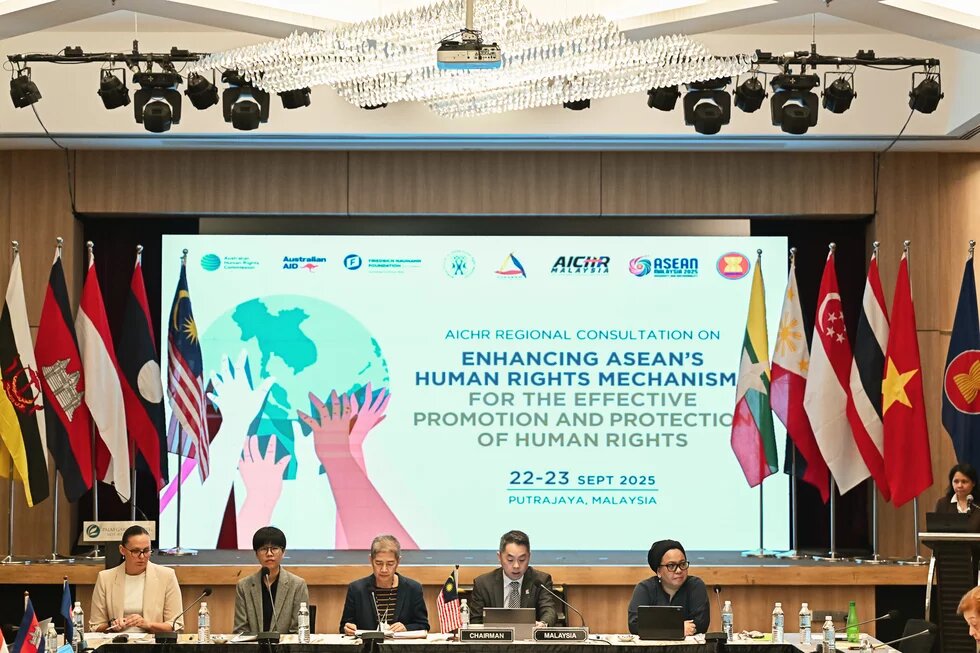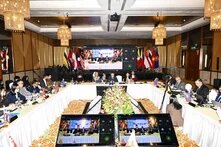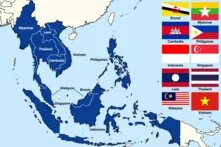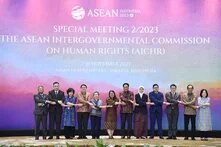
“We should use this declaration as it is, a commitment by 11 member states of ASEAN including Timor-Leste after its official admission in October 2025. This declaration is our regional standard. As a next step, we have to do a gap analysis to make sure what we say on paper will become a reality.”

Introduction
The ASEAN Declaration on the Right to a Safe, Clean, Healthy, and Sustainable Environment (ADER) was officially adopted at the 47th ASEAN Summit held from 26 – 28 October 2025, in Kuala Lumpur, Malaysia. This milestone follows more than two years of deliberation and inputs from civil society organizations across the ASEAN region. Its adoption marks the first regional recognition of the right to a safe, clean, healthy and sustainable environment within ASEAN’s human rights framework.
Heinrich-Böll-Stiftung Southeast Asia Regional Office (hbs) interviewed H.E. Edmund Bon Tai Soon (EB), Malaysia’s Representative to the ASEAN Intergovernmental Commission on Human Rights (AICHR). Edmund Bon chaired the AICHR in 2025, and led the ADER negotiations eventually leading to the adoption of the declaration. During our discussion, we explored his perspectives on what is next for the declaration.
We also discussed how CSOs in the ASEAN region can leverage the declaration to influence regional and national human rights and environmental policies, especially in the context of shrinking civic spaces and the increasing pressures faced by environmental human rights defenders in the region. We also touched on the nuances in the declaration’s language, including on environmental human rights defenders.
Below is the transcript of our interview held on 3rd October 2025:
hbs: How will the ADER declaration support a safe, clean, healthy, and sustainable environment—especially considering it is not legally binding? What difference will it make, and how can civil society actors and environmental defenders maximize this declaration?
EB: I think it's very clear that ASEAN works in a way of what scholars have called “adaptive” protection of human rights. ASEAN works though soft laws first. Then we have a plan of action. If you look at the clauses at the end (of the declaration), the AICHR is [committed to develop] a plan of action. We will have consultations, and we encourage civil society to work in partnership to draft the action plan.
ASEAN cooperates as a type of regional organization. It is not a supranational body. It doesn't have a court. So, we work using encouragement and cooperation. And we have constant monitoring and enforcement through our regular meetings and reporting. That's what we do at ASEAN that people don't see. That doesn't mean that our documents have less impact just because they are not legally binding. In fact, many ASEAN member states have gone over and above what our national laws have by making this declaration, although this declaration is not legally binding.
So, you imagine the AICHR for the first time in 13 years have made commitments, although there are political aspirations where some of our own (national) laws don't even state them expressly. These are aspirations which are new and now need to be operationalized. And we encourage civil society to actually host regional consultations and contribute through expertise when AICHR hosts. But we need to be constructive.
We look forward to see what CSOs are going to provide in their inputs on how we can operationalize (the declaration). For example, if it is for clean air or water or non-toxic environment or human rights defenders, then how do we operationalize them? What are the things that we can do to work together with civil society to protect these areas? That’s how ASEAN can work led by AICHR.
hbs: As the world transitions to a green economy, we are seeing Southeast Asia’s vital role as source of critical minerals. However, mineral extraction often harms local communities and the environment. How can we maximize the declaration to operationalize environmental safeguards and enforce accountability both at ASEAN and national levels?
EB: The declaration recognizes all of the relevant environmental agreements, whether multilateral, or international human rights and (other) treaties. We have looked at also protecting vulnerable groups as well as environmental resources. Not all of us on the commission are experts on the deeper issues touching on the environment, and we need to work with ASEAN bodies on mining and the environment to talk about these issues openly. For example, human rights are mentioned in the ASEAN Principles on Sustainable Minerals Development that was adopted by the 9th ASEAN Ministerial Meeting on Minerals (AMMIN) in 2023, Cambodia. We broadly can see where the issues are. But for specific cases or case studies, and how we want to operationalize it, we would need more information. And that is why, the declaration is drafted in such a way that is broad. But it needs to be brought down to the ground. We need to speak to the implementers.
Once we talk about freedom of expression, risk assessment, which some people call due diligence, we talk also about access to remedies, which means affected people must be able to communicate their concerns through some form of grievance channels. We can try to make sure that judicial and non-judicial, remedies (are in place), where their obligations are also with non-state actors. A lot of it will really depend on both ASEAN governments and civil society as well as our individual member states how we can work together and strategize for the good of the peoples.
I am open to discussing innovative ways as to how we can protect the environment. Perhaps, CSOs also have innovative ideas. We cannot have just one track of how it has always been. We need a compilation of credible sources of information. So that we can say we have this case. Public participation in these cases, [if] you are not allowing groups to publicly participate, and they are protesting a project, what can be done? We can use a case study approach and make recommendations. Or CSOs may want to support states to come up with guidelines or some regulations, or best practices in order to make this declaration (reflect) of the reality on the ground.
hbs: One of the criticisms of the declaration is the lack of a strong language to protect the environment and the people who protect it, including indigenous people and environmental rights defenders. This is in the context of ASEAN, where there are already 354 cases of killings and disappearances of land and environmental defenders in Southeast Asia since 2012. Why is the protection for environmental defenders not explicit in the declaration?
EB: The declaration does have a text that recognizes the need to protect indigenous and local communities as well as for those who work to promote and protect human rights. Environmental human rights defenders in the context of ASEAN, however, are fraught with definition difficulties. There is no common definition at this moment in the region although in Malaysia’s National Action Plan on Business and Human Rights our government has mentioned it. The declaration has a nuanced definition.
We had deliberated on environmental human rights defenders as well as indigenous peoples. We had long negotiations about the language. We are concerned about this issue, of course. But I think we cannot agree on one definition especially when it is a contentious issue. How do we implement the plan of action with what we have? Who are indigenous peoples? Who are environmental human rights defenders? How are they going to be protected? These should be thrashed out in the plan of action.
We already acknowledge indigenous people and local communities, and it is up to you how you want to interpret it. The declaration also has access to justice while recognizing the need to protect vulnerable groups. It talks about implementing multilateral, environmental agreements, which includes the Paris Agreement and now interpreted further by the International Court of Justice advisory opinion. Non-state actors also have a duty. All these are encapsulated. How do we use them? For us at the Commission, we have ensured we did not go lower than international standards.
hbs: ASEAN countries vary widely in their environmental policies. How can the declaration promote a higher standard for environmental safeguards and accountability across the region?
EB: Foremost is that it is an advocacy tool. We should use this declaration as it is a commitment by 11 member states in ASEAN including Timor-Leste after its official admission in October 2025. This is our regional standard. Then we do a gap analysis to make sure what we say on paper will become a reality.
For example, if Malaysia does not have a freedom of information act, we can ask the government to enact the freedom of information act. Because there is a gap. And the declaration, it talks about safe and enabling environment. What does that mean? We need to do a regional gap analysis, and implement the declaration through reporting and regular monitoring to see whether and how states have complied with it.
hbs: What’s next, post-adoption? Can you already identify concrete steps on how AICHR will go into an ASEAN-owned and ASEAN-led Regional Plan of Action to follow-up on the Declaration? How will civil society be able to access this process?
EB: There will be regional consultations starting in December 2025 to gather feedback. We also want to invite CSOs to keep the momentum alive going.


